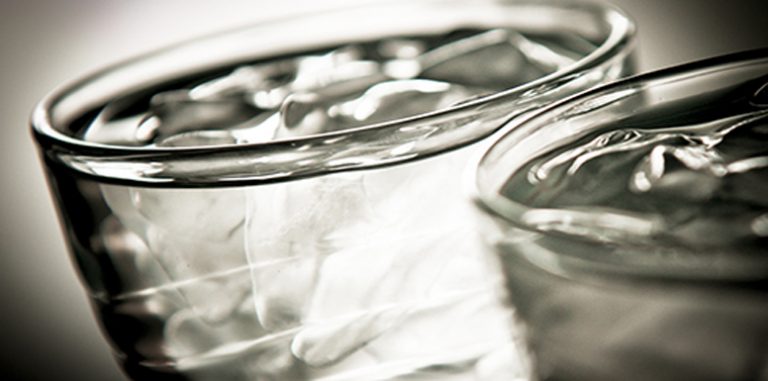N.H. approves unprecedented limits for PFAS chemicals in drinking water
By Annie Ropeik | NHPR | July 19, 2019

Read full article by Annie Ropeik (NHPR)
“New Hampshire on Thursday adopted the country’s most sweeping limits for PFAS chemical contamination in drinking water.
The strict standards won approval from the state legislature’s administrative rules committee, along roughly party lines.
It makes New Hampshire the first state to require local water systems, landfills and wastewater plants to routinely test and treat for four chemicals classified as PFAS.
Those include the most well-studied – PFOA and PFOS – as well as PFHxS and PFNA. The latter is the only PFAS chemical currently subject to a state drinking water standard, passed in New Jersey last year…
At the state legislature’s direction, New Hampshire proposed much more lenient versions of its new standards in January – numbers more in line with Environmental Protection Agency advice. That advice conflicts with some studies, including from the Centers for Disease Control.
After criticism from long-time local PFAS activists and the release this spring of a new peer-reviewed model showing how infants are exposed to PFAS through breastmilk, the state sharply lowered its proposed standards.
The limits are now 12 parts per trillion for PFOA, 15 ppt for PFOS, 18 ppt for PFHxS and 11 ppt for PFNA.
New Jersey’s PFNA standard, the only other such rule in place for a PFAS chemical, is 14 ppt…
It’s a big step forward to advocates like Andrea Amico, who co-founded the group Testing for Pease after her family was exposed to PFAS in drinking water at the former military base in Portsmouth.
Amico says she was surprised by the rules’ swift approval, which she calls ‘remarkable.’
‘It’s another example of New Hampshire leading the way and setting an example to the rest of the nation about how we should be protecting public health around PFAS,’ she said after the committee vote Thursday.
The unprecedented new standards will take effect in October, when local water systems and others will have to begin sampling for PFAS on a quarterly basis in the water they send out for consumption or discharge into the ground.
If their average PFAS level across the first year of testing exceeds the new standards, they’ll have to begin planning how they’ll remove it from their water – whether by supplying clean water from another source, or installing filtration systems on existing supplies.
The state estimates this process could cost these facilities up to $190 million overall in the next two years, with additional ongoing testing and maintenance costs after that.
But Clark Freise, assistant commissioner of the Department of Environmental Services, says he expects municipalities and other operators will find ways to be frugal.
‘They’re very inventive people – they’re good engineers,’ he says. ‘They’ve come up with the alternatives that are actually below the estimates that we had pulled together.’
Plus, he suggests the state won’t hold operators to deadlines they can’t meet…
New Hampshire Municipal Association executive director Margaret Byrnes says this approach ‘could be somewhat reassuring’ to towns that aren’t sure how they’ll pay for new PFAS filtration.
Still, she and stakeholders like the Business and Industry Association feel the approval process was rushed. Byrnes compares it to Environmental Protection Agency rulemaking processes, which can last years.
‘When we look at municipalities that plan out for capital costs and capital infrastructure for six, seven-year plans, why are we not trying to be a little more consistent with that so we set them up for success and not for failure?’ Byrnes says.
Byrnes also fears the cost of the new rules will lead to local water rate and property tax hikes…
Other states like New York and Michigan have proposed similarly low limits to New Hampshire’s new standards, but have promised millions in additional funding to help with compliance.
In New Hampshire, officials say towns will have to use existing state funding, such as loans from the Drinking Water and Groundwater Trust Fund, at least for up-front costs. Freise says DES hopes to work with the legislature next year to consider making more money available.
The state is also suing the makers of PFAS chemicals – 3M and DuPont – as well as five makers of PFAS-based firefighting foam. The lawsuits allege negligence in how the chemicals were allowed to contaminate New Hampshire’s natural resources…
New Hampshire’s lawsuits are unprecedented in their statewide scope. Past suits against companies like 3M, based on more limited contamination issues, have netted hundreds of millions of dollars for affected communities and residents.
If New Hampshire won similar damages, officials say it would go to help towns pay to address their PFAS problems. Any such settlement is likely many years away.
Approximately half of New Hampshire’s residents get their water from private wells, many of which have also been affected by PFAS contamination.
DES estimates that 9 percent of private wells statewide would be considered out of compliance with the state’s new standards, if they had to follow them…
The new rules do not apply to private well owners, but the state encourages testing and filtration and provides some resources to help.”
This content provided by the PFAS Project.
Location:
Topics: